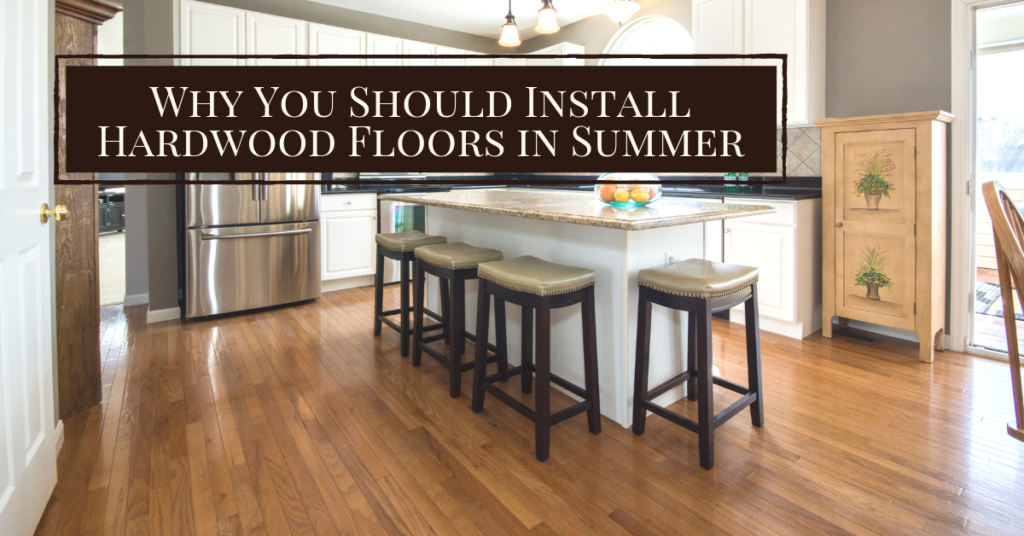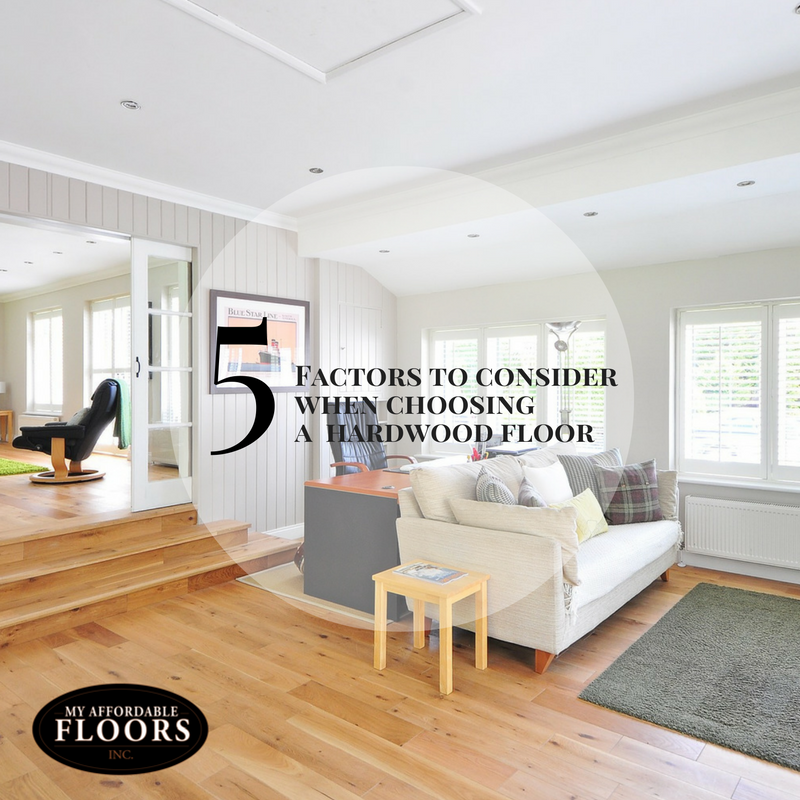Before deciding to renovate your kitchen, it’s important to consider what types of kitchen floors you’re going to use. While it’s fun to pick out cabinets, hardware, and countertops, your kitchen flooring is important, too! When you think about it, the floors are the one thing that stands out the most in a kitchen.
There are many types of kitchen floors, from budget-friendly vinyl to natural hardwood floors, there are plenty of affordable kitchen flooring options for you to choose from! It’s all about what the best kitchen flooring options for your home.
Here’s our list of kitchen flooring options to get you started:
Hardwood
Hardwood flooring is timeless and classic. It’s by far the most sought-after flooring. It brings an immediate sense of elegance and unmatched beauty to not only just your kitchen but your entire home.
Due to their gorgeous, warm aesthetic, hardwood floors are an incredibly desirable flooring material, and this is no exception for homebuyers. Installing hardwood in your kitchen can skyrocket the value of your home. Other kinds of flooring products come close but they can never completely replicate their glowing natural beauty. They’re also durable and guaranteed to last for centuries.
On the downside, hardwood floors require a good bit of maintenance. They’re more difficult to clean and susceptible to scratches. These types of floors are also incredibly porous, so when they’re exposed to water or moisture over the long term, they can warp. Lastly, there’s the cost of hardwood. High-quality hardwood flooring runs from $ 4 – $12 a sq. ft., so expect this material to be a bit harsher on the wallet.
If you’re thinking of installing hardwood in your home but feel it may be out of your budget, engineered hardwood is an option rather than solid natural hardwood flooring. Engineered hardwood is more water-resistant, friendlier on your wallet, and better for the planet. Plus, it looks pretty close to the real thing!
Laminate
Laminate has been a go-to in the flooring world for quite some time now. Nowadays, there are tons of laminate designs to choose from, and they’ve become the perfect cost-efficient alternative to hardwood flooring.
While laminate flooring is not an exact match to wood, with the help of modern technology, it can look pretty close to the real thing. It’s also easy to install and takes no time at all to do as a quick DIY project, since laminate floors are made to lock together, making it consumer-friendly.
Laminate flooring is very affordable and will usually cost around $2 – $5 per sq. foot. That comes in significantly cheaper than other flooring types, and especially hardwood. It’s also a good investment as laminate flooring is typically pretty durable and very easy to replace.
Some of laminate flooring’s lesser qualities can be justified by its affordability. Of all the downsides of laminate flooring, installing it in your kitchen could result in it having to be replaced sooner rather than later. This is because laminate is not very moisture-resistant, so spills or any sort of contact with water over time can be detrimental to your laminate floors. Unfortunately, the lifespan of laminate and the risk of exposure to too much moisture can make it undesirable for a lot of homebuyers, which means it wouldn’t add a lot of value to your home.
In conclusion, laminate flooring is an amazing choice for someone who just wants flooring to get the job done. It’s affordable, it looks great, and it’s easy to install. However, because of its lack of durability and how prone it is to being damaged by moisture, it isn’t the most ideal material for a kitchen.
Vinyl
Vinyl is the most popular form of residential kitchen flooring. This is primarily because it’s very low-maintenance, moisture-resistant, budget-friendly, and long-lasting. It’s also pleasant to walk on due to the ability to insulate under the material. Even better, vinyl flooring is able to look better than ever these days due to advanced technology, giving you a seemingly limitless amount of options to choose from.
That being said, vinyl flooring does have its downsides. It’s a little easier to scratch than the alternatives such as tile. It’s also vulnerable to water penetrating the top layer of the flooring (the top of vinyl is water-resistant, underneath is not), so being rough with your floors or overcleaning could produce some unfortunate results. On top of this, vinyl flooring is rather difficult to repair.
To sum it up simply, vinyl flooring is an incredibly cost-efficient option for your kitchen and it doesn’t look too bad either! On the other hand, if you have pets or you’re in general a bit rough with your floors, it may not be the right choice for your kitchen.
Tile
Tile is a great flooring option for the kitchen. It not only looks elegant and clean, but it’s also a breeze to maintain and incredibly durable. There’s a vast selection of tile options to choose from-including quarry, marble, porcelain, and ceramic. To make matters even better, modern printing technology can generate pretty much any design you can think of on your tile floor! Tile is incredibly versatile, so it’s sure to fit the ideas you may have for your kitchen.
Tile flooring has a nearly impenetrable surface that’s extremely tough and durable. Tile flooring will last for an extremely long time, is water-resistance, and cannot easily be scratched. A tile floor needs very little cleaning unless something is spilled on it, making it the perfect material for kitchens. Perhaps the best part of this is that tile flooring is also cost-efficient; making it possible to get a quality porcelain tile for $4 per square feet or less!
Nothing is perfect, so there are of course a few cons that come with tile flooring. The biggest downside to tile is that it can get especially slick when wet, creating safety hazards in your kitchen, especially if your tile is glazed. Tile flooring is also susceptible to cracks and chips if heavier items are dropped on them. Lastly, older homeowners and those that suffer from knee or foot problems might have some difficulty standing tile, as they’re solid and rough surface and provide no support, unlike hardwood or vinyl flooring.
In all, tile is the ultimate option for kitchen floors. Though it has its flaws, it is still to this day the kitchen flooring option that offers the most durability, aesthetic value, and it can save you a lot of money compared to the other options!
My Affordable Flooring is Here to Help Find The Right Kitchen Flooring Option For You
There are a lot of different flooring options and making a decision can be difficult, so if you’re looking to have new floors installed for your kitchen, we would love to help! Our ultimate goal is to meet your budget needs and providing you with the best kitchen flooring options for your home. If there is anything we can do to help you, please feel free to contact us!



You must be logged in to post a comment.